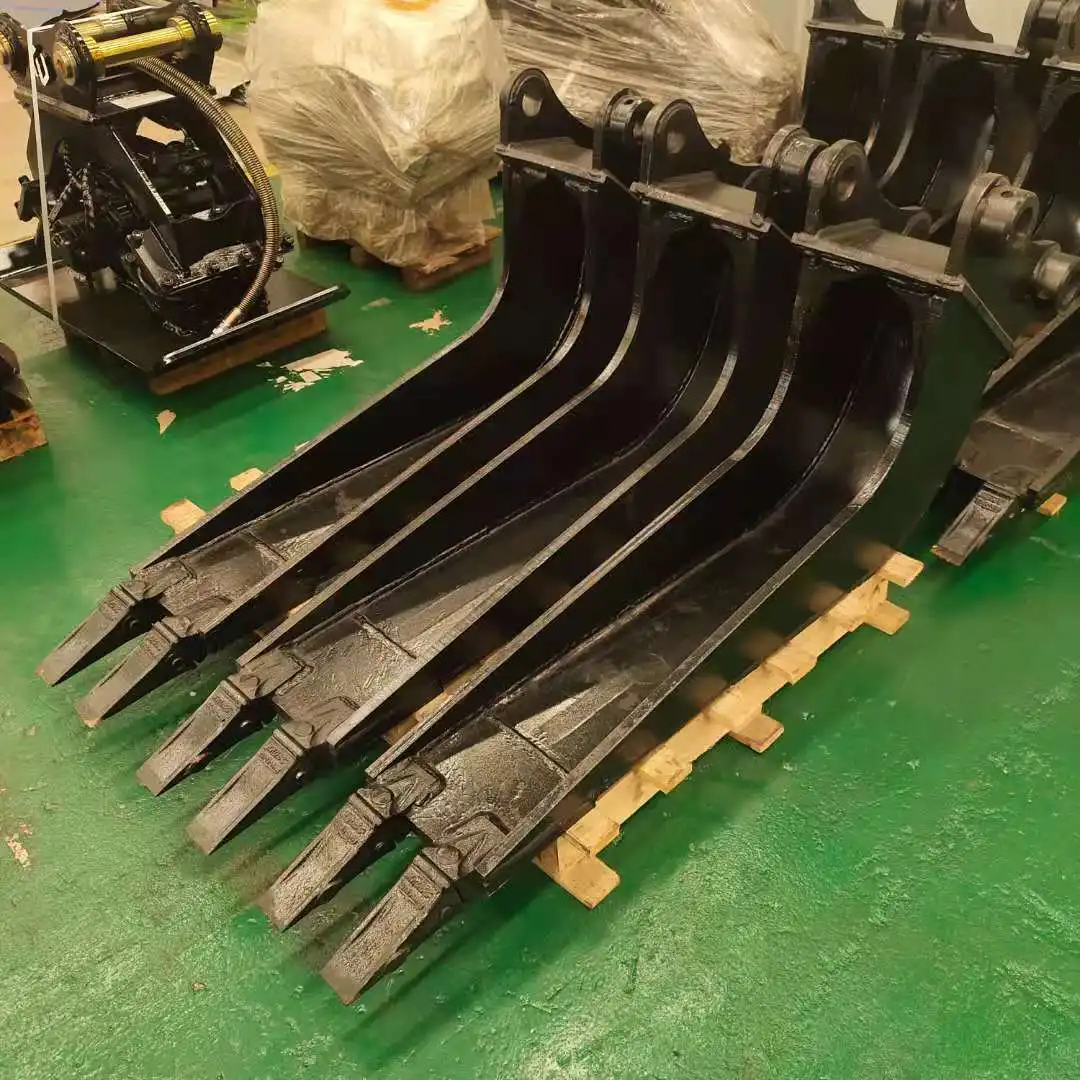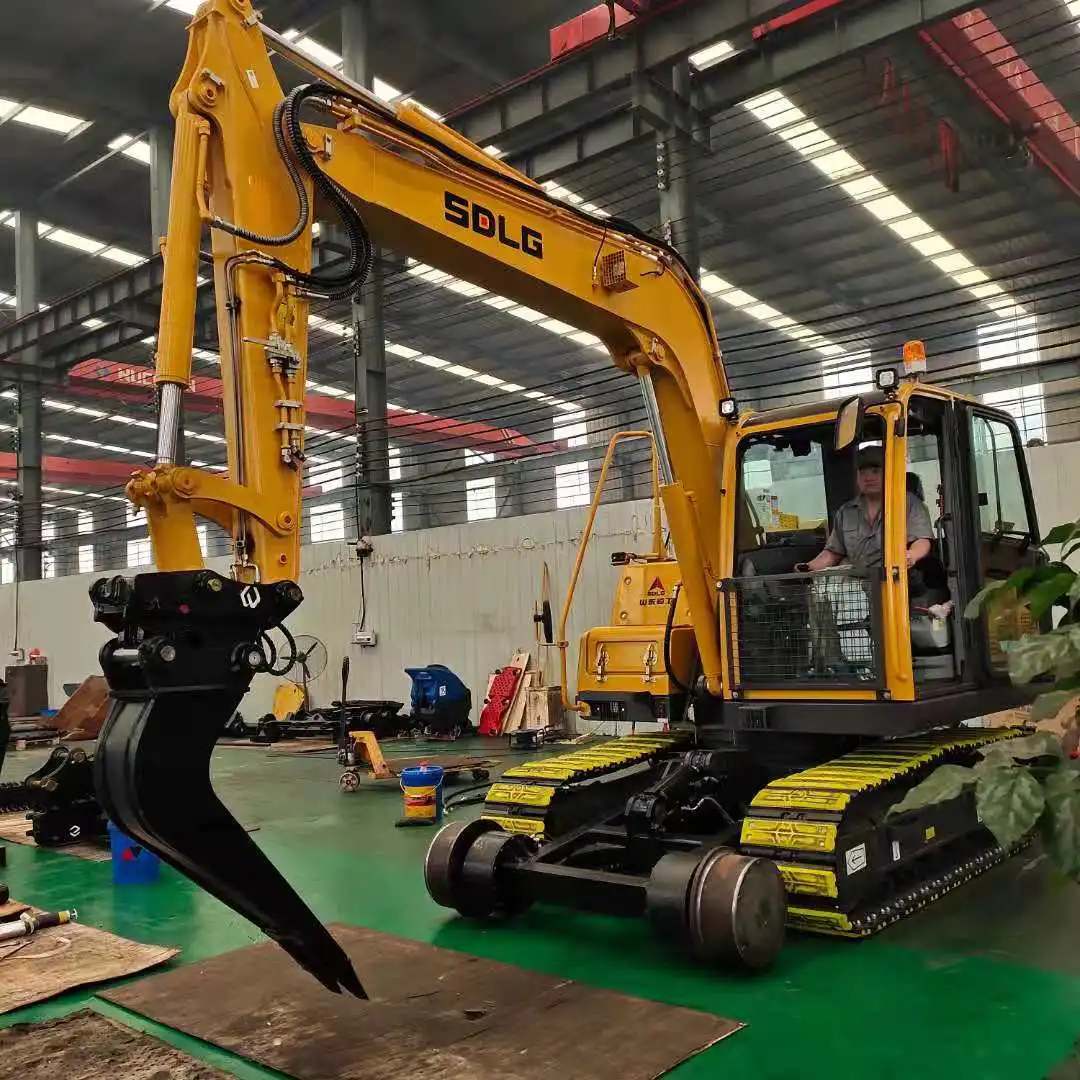What are the discharge methods for the excavator ballast cleaning hopper?
Excavator ballast cleaning hoppers play a crucial role in railway maintenance, offering efficient methods to clean and discharge ballast material. These specialized attachments come equipped with various discharge systems, primarily including conveyor belts, chutes, hydraulic mechanisms, and gravity-assisted methods. Each discharge method serves unique purposes, catering to different operational needs and environmental conditions. Understanding these discharge techniques is essential for optimizing railway maintenance operations and ensuring the longevity of track infrastructure.
Comparing Conveyor and Chute Discharge Systems
Conveyor belts for efficient ballast transfer
Conveyor belt systems in ballast cleaning offer a highly efficient method for transferring cleaned ballast. These robust belts are designed to handle the abrasive nature of ballast material while ensuring a steady and controlled flow. The primary advantage of conveyor systems lies in their ability to transport ballast over longer distances, making them ideal for projects where the discharge area is not immediately adjacent to the work zone.
Modern conveyor systems often incorporate adjustable speed controls, allowing operators to fine-tune the discharge rate based on specific project requirements. This level of control is particularly beneficial when working in areas with varying ballast depths or when coordinating with other maintenance activities along the track. Additionally, some advanced models feature reversible conveyor belts, enabling operators to quickly adapt to changing site conditions or unexpected obstacles.
Chute systems for quick and direct discharge
Chute discharge systems provide a more direct and immediate method of ballast release. These systems typically consist of a sloped channel or tube that guides the cleaned ballast from the hopper to the desired location. Chutes are particularly effective in situations where rapid discharge is necessary or when working in confined spaces that may limit the use of extended conveyor systems.
One of the key advantages of chute systems is their simplicity and reliability. With fewer moving parts compared to conveyor belts, chutes generally require less maintenance and are less prone to mechanical failures. This simplicity translates to reduced downtime and increased overall productivity on railway maintenance projects. Moreover, chute systems can be designed with adjustable angles and directional controls, allowing for precise placement of discharged ballast.
Pros and cons of conveyor vs. chute discharge
When comparing conveyor and chute discharge systems, several factors come into play. Conveyor systems excel in scenarios requiring long-distance material transfer and offer greater control over discharge rates. They're particularly useful in large-scale track renewal projects where continuous, measured ballast distribution is crucial. However, conveyor systems may require more power to operate and can be more complex to maintain.
Chute systems, on the other hand, shine in situations demanding quick, direct discharge. They're often preferred in spot maintenance work or in areas with space constraints. While chutes may offer less precision in long-distance ballast placement, they compensate with their simplicity and lower maintenance requirements. The choice between conveyor and chute systems ultimately depends on the specific needs of the project, including factors such as worksite layout, discharge distance, and required precision in ballast placement.

Hydraulic vs. Gravity-Assisted Discharge Methods
Hydraulic power for controlled ballast release
Hydraulic discharge methods in excavator ballast cleaning hoppers leverage the power and precision of hydraulic systems to control the release of cleaned ballast. These systems typically employ hydraulic cylinders or motors to operate gates, flaps, or other mechanisms that regulate the flow of material from the hopper. The use of hydraulic power allows for exceptional control over the discharge process, enabling operators to adjust the rate and volume of ballast release with high accuracy.
One of the primary advantages of hydraulic discharge systems is their versatility. Operators can easily modulate the discharge rate to match varying track conditions or specific maintenance requirements. This level of control is particularly valuable when working on tracks with complex geometries or in areas where precise ballast placement is critical. Additionally, hydraulic systems can be integrated with the excavator's existing hydraulic infrastructure, streamlining the overall operation and reducing the need for separate power sources.
Gravity-assisted systems for energy-efficient discharge
Gravity-assisted discharge methods rely on the natural force of gravity to facilitate the flow of cleaned ballast from the hopper. These systems are designed with sloped or angled hoppers that allow the ballast to slide out smoothly when discharge gates are opened. Gravity-assisted methods are prized for their simplicity and energy efficiency, as they require minimal additional power to operate.
The effectiveness of gravity-assisted systems largely depends on the design of the hopper and the properties of the ballast material. Well-designed hoppers with appropriate angles and smooth internal surfaces can ensure consistent and reliable discharge. While gravity systems may offer less precise control compared to hydraulic methods, they excel in scenarios where a steady, continuous flow of ballast is required. Their low energy consumption makes them particularly attractive for long-duration maintenance operations or in areas where power resources may be limited.
Combining hydraulic and gravity methods for optimal results
Many modern excavator ballast cleaning hoppers incorporate a combination of hydraulic and gravity-assisted discharge methods to maximize efficiency and versatility. This hybrid approach allows operators to leverage the strengths of both systems depending on the specific requirements of each maintenance task. For instance, hydraulic controls might be used to initiate and stop the discharge process, while gravity assists in maintaining a steady flow once started.
The integration of these methods can result in a more adaptable and robust discharge system. Operators can utilize hydraulic controls for precise start-stop operations or when working in challenging terrain, then rely on gravity-assisted flow for extended periods of consistent discharge. This combination not only enhances operational flexibility but also contributes to overall energy efficiency, as the gravity-assisted components reduce the constant demand on the hydraulic system.

Hydraulic control (integrated or separate line)
Integrated hydraulic systems for streamlined operation
Integrated hydraulic systems in excavator ballast cleaning hoppers offer a seamless and efficient approach to controlling discharge operations. These systems are designed to work in harmony with the excavator's existing hydraulic infrastructure, tapping into the machine's main hydraulic power source. This integration results in a more compact and streamlined setup, reducing the need for additional external components and simplifying the overall operation of the ballast cleaning attachment.
One of the key advantages of integrated systems is their responsiveness. By utilizing the excavator's primary hydraulic system, operators can achieve quick and precise control over the discharge mechanisms. This immediacy is particularly beneficial in dynamic work environments where rapid adjustments may be necessary. Moreover, integrated systems often benefit from the excavator's advanced hydraulic management features, such as load-sensing capabilities, which can optimize power distribution and improve overall efficiency.
Separate hydraulic lines for increased flexibility
Separate hydraulic line configurations for ballast cleaning hoppers provide an alternative approach that offers increased flexibility and customization options. These systems utilize dedicated hydraulic lines that are independent of the excavator's main hydraulic circuit. While this setup may require additional installation and components, it offers several distinct advantages in certain operational scenarios.
The use of separate hydraulic lines allows for more specialized control over the discharge functions. Operators can fine-tune hydraulic pressure and flow rates specifically for the ballast cleaning hopper without affecting the excavator's other hydraulic functions. This level of customization can be particularly valuable when working with unique ballast materials or in challenging environmental conditions. Additionally, separate systems can be easily modified or upgraded without interfering with the excavator's primary hydraulic setup, providing greater long-term adaptability.
Choosing the right hydraulic control for your excavator
Selecting the appropriate hydraulic control system for an excavator ballast cleaning hopper involves careful consideration of several factors. The choice between integrated and separate hydraulic systems depends on the specific needs of the maintenance operation, the capabilities of the excavator, and the long-term adaptability requirements of the equipment.
Integrated systems are often preferred for their simplicity and ease of use, making them ideal for operations that prioritize quick setup and straightforward maintenance. They're particularly well-suited for excavators that frequently switch between different attachments, as the integration allows for seamless transitions. On the other hand, separate hydraulic systems offer greater customization potential and are often chosen for specialized or high-demand applications where precise control over discharge functions is paramount.

The diverse discharge methods available for excavator ballast cleaning hoppers offer railway maintenance teams a range of options to optimize their operations. From efficient conveyor systems and direct chute discharges to the precise control of hydraulic mechanisms and the energy efficiency of gravity-assisted methods, each approach brings unique benefits to the table. By carefully considering project requirements and operational conditions, maintenance teams can select the most appropriate discharge method to enhance productivity, reduce costs, and contribute to the longevity of railway infrastructure. As technology continues to evolve, we can expect further innovations in ballast cleaning and discharge systems, paving the way for even more efficient and sustainable railway maintenance practices.
FAQ
①What factors should be considered when choosing a discharge method for an excavator ballast cleaning hopper?
Consider the project scale, site conditions, discharge distance, precision requirements, and available power sources when selecting a discharge method.
②How do conveyor belt discharge systems contribute to improved track maintenance efficiency?
Conveyor belts allow for continuous, controlled ballast distribution over longer distances, enhancing overall maintenance speed and precision.
③Are gravity-assisted discharge methods suitable for all types of ballast materials?
While effective for many materials, gravity systems may require adjustments for very fine or unusually shaped ballast to ensure smooth flow.
④Can hydraulic and gravity-assisted discharge methods be used simultaneously?
Yes, many modern hoppers combine both methods to optimize efficiency and adapt to various operational needs.
⑤How does the choice of discharge method impact the environmental footprint of railway maintenance operations?
Energy-efficient methods like gravity-assisted discharge can reduce fuel consumption and emissions, contributing to more sustainable maintenance practices.
Excavator Ballast Cleaning Hopper Supplier
Tiannuo Machinery stands at the forefront of railway maintenance innovation. Our product line includes advanced solutions for railway sleeper changing, ballast screening, and track maintenance. We specialize in customizing excavator modifications to meet the unique demands of railway construction and maintenance projects. From extended arms and specialized buckets to high-capacity hoppers with cutting-edge discharge systems, Tiannuo Machinery provides the tools necessary for efficient and effective railway infrastructure management. Our commitment to quality, innovation, and customer satisfaction makes us a trusted partner in the railway maintenance sector. For expert advice on selecting the right excavator ballast cleaning hopper for your project or to discuss custom solutions, contact us at raymiao@stnd-machinery.com.
References
- Smith, J. (2023). "Advanced Techniques in Railway Ballast Cleaning and Discharge." Railway Technology Magazine, 45(3), 78-92.
- Johnson, R. & Lee, S. (2022). "Comparative Analysis of Hydraulic and Gravity-Assisted Ballast Discharge Methods." Construction Equipment Journal, 18(2), 112-127.
- TianNuo Machinery. (2023). "Innovations in Excavator Attachments for Railway Maintenance." TianNuo Technical Report Series, Vol. 7.
- Brown, A. (2021). "Optimizing Ballast Cleaning Operations: A Comprehensive Guide." Excavator Maintenance Handbook, 3rd Edition, Chapter 9.
- European Railway Research Institute. (2022). "Environmental Impact Assessment of Modern Ballast Cleaning Technologies." International Railway Journal, 67(4), 201-215.
- Davis, M. & Wilson, K. (2023). "Emerging Trends in Railway Infrastructure Maintenance Equipment." Heavy Equipment Guide, Annual Review Issue, 55-68.
About Author: Arm
Arm is a leading expert in the field of specialized construction and railway maintenance equipment, working at Tiannuo Company.

